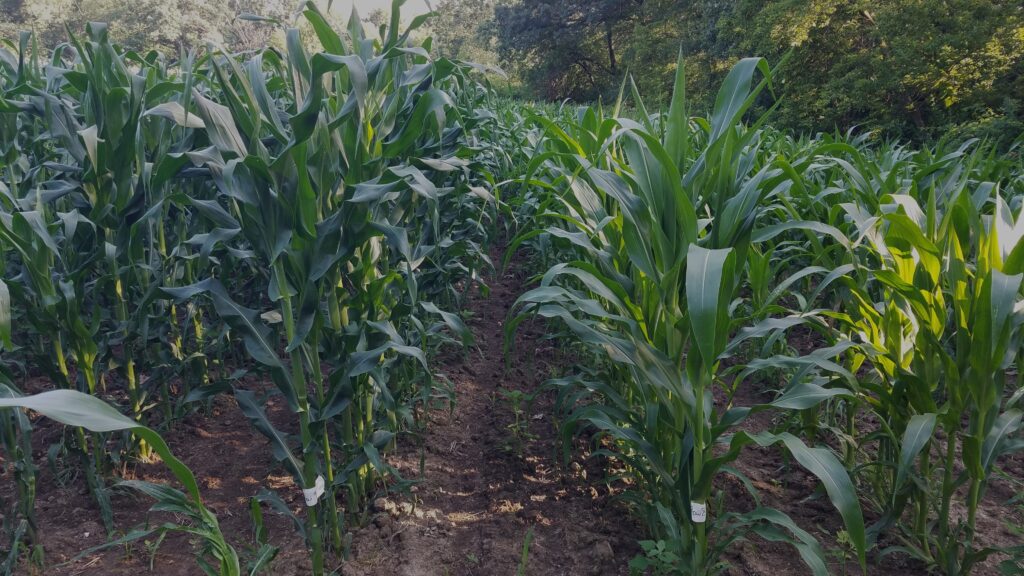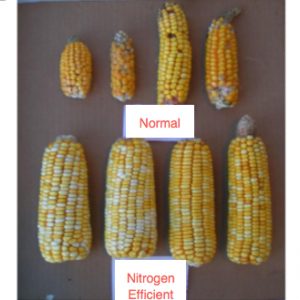Old and New
When people think about small dairy farms that use horses, they don’t typically think about innovation. Yet in some ways, it’s easier for small farms to try new things. Whereas a typical large farm uses large scale machinery on fields that are 100’s of acres, small farms like this one can focus on small 5-acre plots. This is very useful for research and development of seeds.

This farm participates in research and development trials for the Mandaamin Institute. In a world where most commercial corn is developed and sold by three giant global companies, a small nonprofit like Mandaamin is very unusual.
Instead of developing varieties through genetic engineering (GMOs), Mandaamin uses ancient varieties of corn and traditional breeding techniques. They use ancient strains of corn that work with microorganisms to take nitrogen from the air and the soil and use it to grow. Corn is typically a “heavy feeder”, meaning it is a crop that requires a lot of added nitrogen to grow. GMO corn cannot produce a crop without adding nitrogen fertilizer. The nitrogen efficient corn Mandaamin is developing could therefore be very significant to growing corn in the future.
Mandaamin also develops and sell open pollinated varieties, meaning farmers can grow corn, save their seed, and plant it the next year. GMO corn has been bred so it cannot be replanted, which leaves farmers dependent on the big seed companies and chemical additives in perpetuity.
Mandaamin’s breeds have been bred to be nutritionally superior. They are naturally high in methionine and lycine, amino acids that are low in commercial feeds and require supplementation. The organic standard is moving toward restricting the use of methionine supplements, which will make this corn very valuable to organic farmers.
Lastly, Mandaamin is working with ancient varieties of corn that are so old that they are gametophytically incompatible with GMO corn. This means the plants do not recognize pollen from GMO farms as pollen and they don’t get fertilized by it. Organic farmers struggle to keep their crops free from GMO contamination from pollen from neighboring farms. Their crops are tested at harvest for the presence of GMOs, and even small amounts can mean the crop can’t be sold as organic. To deal with this, organic farmers often must dedicate a portion of their land to buffer strips that aren’t used for organic production. This reduces their profitability. Gametophytically incompatible corn would enable organic farms to avoid having buffer strips, which would enhance their profitability.
These characteristics of Mandaamin corn breeds have a lot of potential to change how we raise organic corn. But to get to a fully commercialized seed, it takes a lot of research trials to develop and standardize traits so farms can have replicable results. The big seed companies have their own corporate test farms and a network of farmers around the world that work with them. For Mandaamin, having a network of small test sites on a variety of small farms is critical because these farms can be both places where new hybrids are grown or places where they are replicated.


Small farms like this one are very important to preserving small seed companies for small farms. They preserve genetic diversity and are an alternative to the GMO approach that dominates the large seed companies.
To learn more about the Mandaamin Institute and their corn, see:
A note about our photos: We are excited to use photos to connect you to the farms that supply milk for your Organic Squeaks so you can learn about the wide range of eco-active practices they use. Unless noted otherwise, these photos were taken on this farm by a photographer who is also one of our farmers. We respect the culture and privacy preferences of our farm partners, which is why you won’t always see people in our photos.

